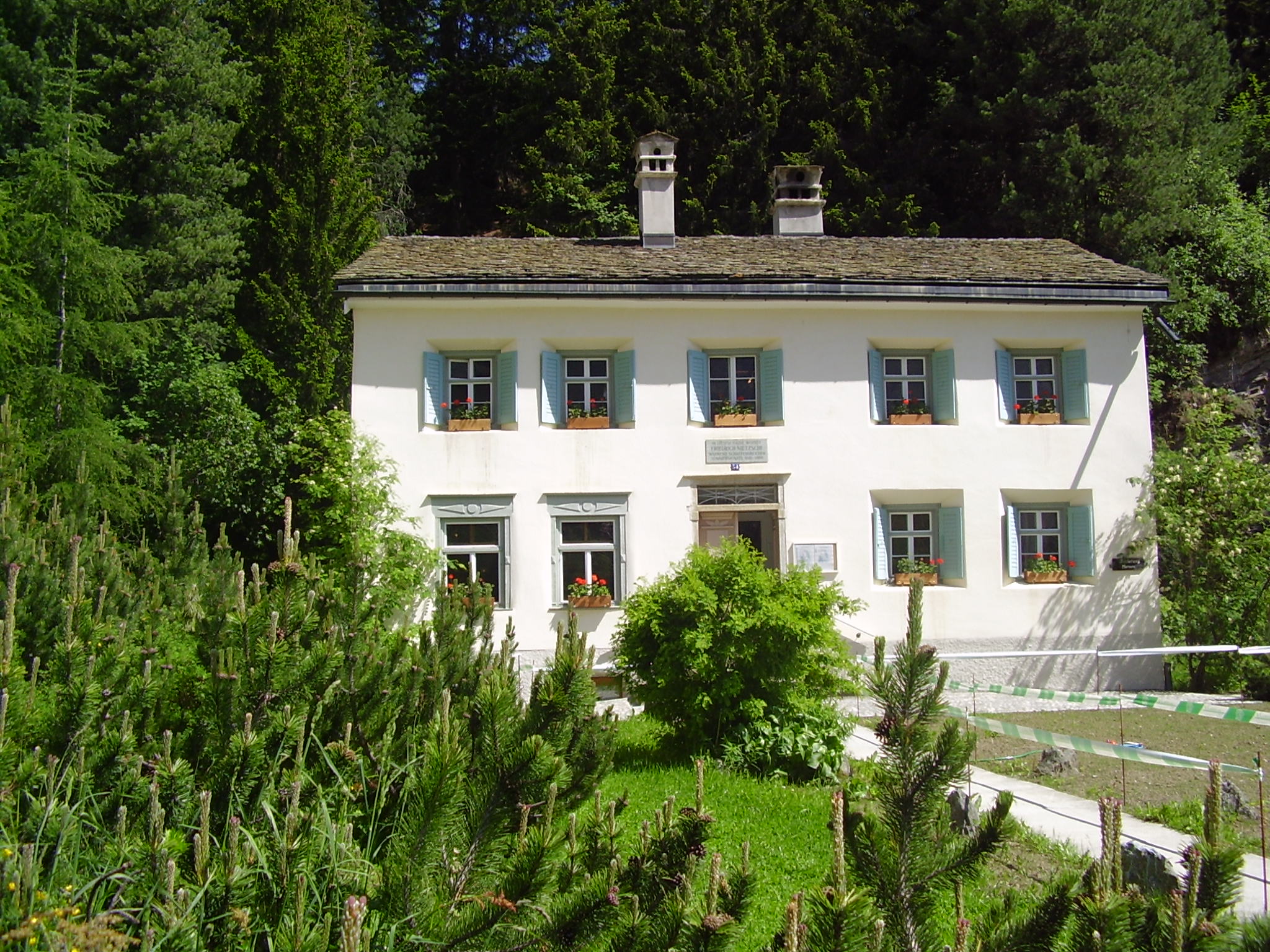FPO Helps Restore Nietzsche’s Room in Sils Maria
In search for a climate and weather most therapeutic for his poor health, Friedrich Nietzsche (1844-1900) discovered his favorite place for working in the Swiss region of Upper Engadin in Graubünden, the village of Sils Maria in the midst of a beautiful valley, 6,000 feet above the sea with a chain of lakes, surrounded by mountains as high as 11,000 feet. In June I879, on his first visit, he wrote to his friend Franz Overbeck: “I have taken possession of the Engadine and I’m like in my element, quite miraculous! I am related to this nature. Now I feel relief.” Having found what he longed for, he wanted to keep his place a secret and emphasized: “Hide my whereabouts from everyone.” Nietzsche returned to his favorite spot for overall seven summers and spent some of his most productive months here, renting a small room in “Haus Durisch” in Sils-Maria. During hikes he went on for several hours, sometimes days, he scribbled his thoughts into notebooks; in his small room, which he called “his cave,” he then prepared the manuscripts of many of his most important works, such as The Joyful Science, Thus Spoke Zarathustra, Beyond Good and Evil, On the Genealogy of Morality, The Case of Wagner, Twilight of the Idols, and The Antichrist.
Paul Deussen, Nietzsche’s friend and a professor of philosophy, later reported his memories visiting Nietzsche: “The next morning he took me to his apartment, or as he said, to his cave. It was a simple room in a farmhouse, three minutes from the road: Nietzsche rented it during the season for one franc a day. The furnishings were the simplest imaginable. On one side there were his books, most of which I still knew well from earlier times, followed by a rustic table with coffee cup, eggshells, manuscripts, toiletries in a colorful jumble, which continued via a boot jack with a boot on it to his unmade bed.”
But when Nietzsche first stayed in this small room, the walls were too bright for his sensitive eyes. In 1883 he thus had the wallpaper replaced with dark green colors in a pattern that he chose and paid for himself. A dark-green tablecloth matched the wallpaper, and both together must have provided his “cave” with an atmosphere very conducive for his focused writing.
Time did its work. After so many decades, more and more damage in the room became visible, and when Mike and Tina Hodges saw it last summer, they spontaneously decided to help restore the room. The people responsible at the Nietzsche-Haus were asked and gladly accepted the offer.
Only about 5 sq. ft. of Nietzsche’s selected wallpaper had survived in a condition that they could be displayed under the wood paneling that was later laid over it. FPO is very happy to support the reconstruction of the original wallpaper of the walls visible for visitors. In addition, the gradually deteriorated ceiling was restored and the delicate light blue and light red lines on the margins were redrawn. Even the furniture, which came from the hotel where Nietzsche dined for lunch, has been carefully restored. For all this, the best local craftsmen were engaged. In just a few months, everything was complete. Now, we can again experience Nietzsche’s “cave” in a similar way as he did over 120 years ago and revisit the atmosphere in which Nietzsche spent some of his most prolific and creative months.
FPO has a special connection to Sils Maria going beyond Nietzsche’s room: not only were the official documents for the founding of our foundation signed here in July 2018 by its founding members, Tina and Mike Hodges, Werner Stegmaier, and Reinhard G. Mueller, but it has also been a destination of multiple visits by FPO in order to attend its annual Nietzsche Workshops as well as to explore Nietzsche’s favorite landscape during hikes. Werner Stegmaier, whose philosophy of orientation the FPO is based on is also a board member of the Nietzsche-Haus Foundation and a world-renowned Nietzsche expert.






